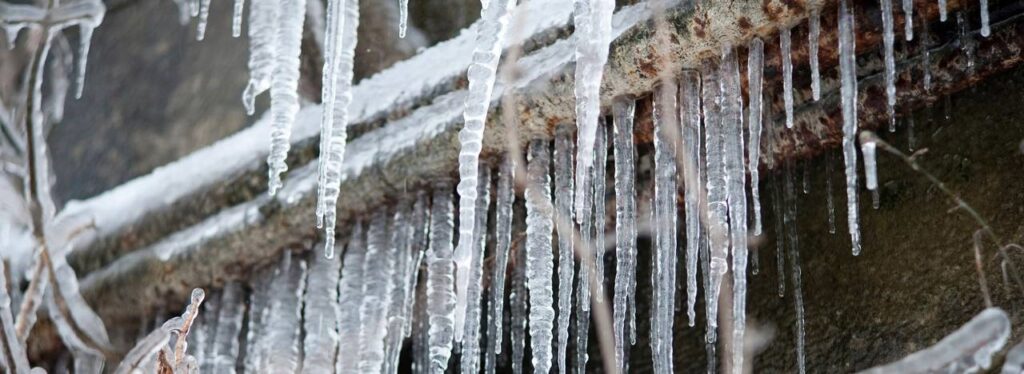Essential Tips to Protect Against Frozen Plumbing in Winter
Essential Tips to Protect Against Frozen Plumbing in Winter
Blog Article
We have unearthed this great article pertaining to How To Avoid Freezing Pipes listed below on the net and decided it made sense to discuss it with you on my blog.

Cold weather can ruin your plumbing, particularly by freezing pipelines. Here's how to prevent it from occurring and what to do if it does.
Introduction
As temperatures decrease, the threat of frozen pipes rises, possibly resulting in expensive fixings and water damage. Comprehending exactly how to stop icy pipelines is crucial for property owners in chilly environments.
Avoidance Tips
Shielding at risk pipelines
Wrap pipes in insulation sleeves or utilize warm tape to safeguard them from freezing temperatures. Focus on pipes in unheated or external locations of the home.
Home heating methods
Keep indoor rooms effectively heated up, especially areas with pipes. Open up closet doors to allow warm air to circulate around pipes under sinks.
Just how to identify frozen pipes
Look for decreased water flow from taps, uncommon smells or noises from pipes, and visible frost on revealed pipes.
Long-Term Solutions
Structural changes
Think about rerouting pipelines away from outside walls or unheated areas. Include extra insulation to attics, cellars, and crawl spaces.
Updating insulation
Invest in high-quality insulation for pipes, attics, and wall surfaces. Correct insulation helps preserve constant temperature levels and reduces the risk of frozen pipes.
Securing Exterior Pipes
Yard tubes and exterior taps
Separate and drain pipes yard tubes prior to winter months. Mount frost-proof faucets or cover exterior taps with protected caps.
Comprehending Frozen Pipes
What causes pipelines to ice up?
Pipes freeze when revealed to temperature levels below 32 ° F (0 ° C) for extended periods. As water inside the pipes ices up, it broadens, putting pressure on the pipeline walls and possibly triggering them to burst.
Threats and damages
Icy pipelines can lead to water supply interruptions, residential property damage, and costly repairs. Ruptured pipelines can flood homes and trigger extensive architectural damages.
Indications of Frozen Pipes
Determining icy pipes early can avoid them from rupturing.
What to Do If Your Pipelines Freeze
Immediate actions to take
If you suspect icy pipes, maintain taps open up to ease stress as the ice melts. Use a hairdryer or towels soaked in warm water to thaw pipes slowly.
Conclusion
Preventing icy pipes requires aggressive steps and fast actions. By understanding the reasons, indications, and safety nets, house owners can protect their pipes during winter.
5 Ways to Prevent Frozen Pipes
Drain Outdoor Faucets and Disconnect Hoses
First, close the shut-off valve that controls the flow of water in the pipe to your outdoor faucet. Then, head outside to disconnect and drain your hose and open the outdoor faucet to allow the water to completely drain out of the line. Turn off the faucet when done. Finally, head back to the shut-off valve and drain the remaining water inside the pipe into a bucket or container. Additionally, if you have a home irrigation system, you should consider hiring an expert to clear the system of water each year.
Insulate Pipes
One of the best and most cost-effective methods for preventing frozen water pipes is to wrap your pipes with insulation. This is especially important for areas in your home that aren’t exposed to heat, such as an attic. We suggest using foam sleeves, which can typically be found at your local hardware store.
Keep Heat Running at 65
Your pipes are located inside your walls, and the temperature there is much colder than the rest of the house. To prevent your pipes from freezing, The Insurance Information Institute suggests that you keep your home heated to at least 65 degrees, even when traveling. You may want to invest in smart devices that can keep an eye on the temperature in your home while you’re away.
Leave Water Dripping
Moving water — even a small trickle — can prevent ice from forming inside your pipes. When freezing temps are imminent, start a drip of water from all faucets that serve exposed pipes. Leaving a few faucets running will also help relieve pressure inside the pipes and help prevent a rupture if the water inside freezes.
Open Cupboard Doors
Warm your kitchen and bathroom pipes by opening cupboards and vanities. You should also leave your interior doors ajar to help warm air circulate evenly throughout your home.

We had been made aware of that article on Prevent Frozen Pipes from a friend on a different website. Do you know about someone else who is in the market for the subject? Feel free to share it. I am grateful for your time. Don't hesitate to pay a visit to our site back soon.
Detail Report this page